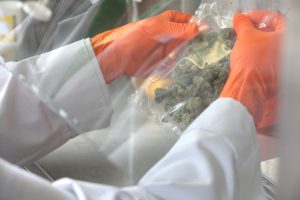
This story first appeared at Marijuana Business Daily.
With hemp cultivation legal in the U.S., there is a need for fast and convenient methods for analyzing residual pesticides on crops to replace existing, time-consuming approaches.
Researchers at the U.S. Department of Agriculture and the National University of Litoral in Argentina have extended an existing method of sample preparation they claim better meets the efficiency and reproducibility needs of the cannabis industry.
Accurately and consistently analyzing crops for pesticide residues can be time-consuming and costly.
An existing method for preparing samples, called QuEChERS—quick, easy, cheap, effective, rugged, and safe—was originally developed to measure pesticide residues on fruits, vegetables, and non-food crops like tobacco, and has been used since 2014 for cannabis.
It’s a two-step process: extraction of analytes, usually in acetonitrile, followed by cleanup to remove compounds—sugars, fatty acids, and pigments—that could interfere with the analysis.
In the case of cannabis, these interfering compounds include cannabinoids and terpenes.
The authors revised QuEChERS to make it amenable for testing a wider range of products besides pesticides, including environmental contaminants as well as plant and fungal toxins. They validated the sample preparation method for 106 pesticides that are monitored in North America.
The limit of quantification (LOQ) for most of the pesticides tested was <10 ng/g, with 2.8% false negatives. This LOQ falls below that established by the California Bureau of Cannabis Control, which requires a detection limit of <100 ng/g.
The revised method can be used on whole fresh plant material, flowers, powders, oil, and pellets, but does not work with dried hemp plants and flowers. Once the samples are prepared, they are analyzed using ultra-high-performance liquid chromatography-tandem mass spectrometry and gas chromatography-tandem mass spectrometry.
Even with this specialized equipment, pesticide testing methods are manual, time-consuming, and require expertise. The process has to be repeated separately for each pesticide in question. For example, in California, cannabis must be tested for 66 different pesticides.

